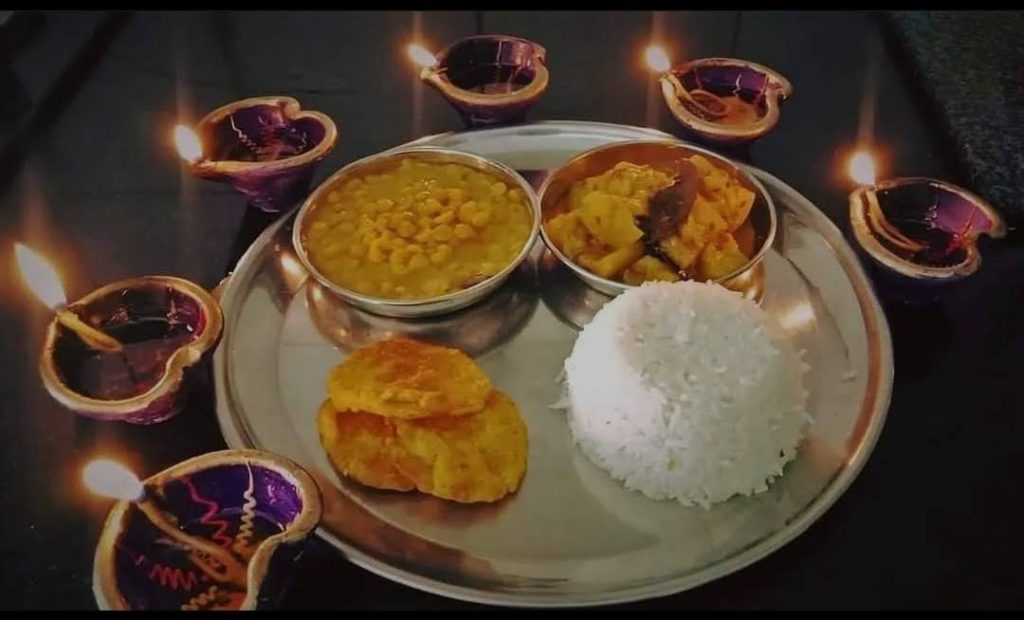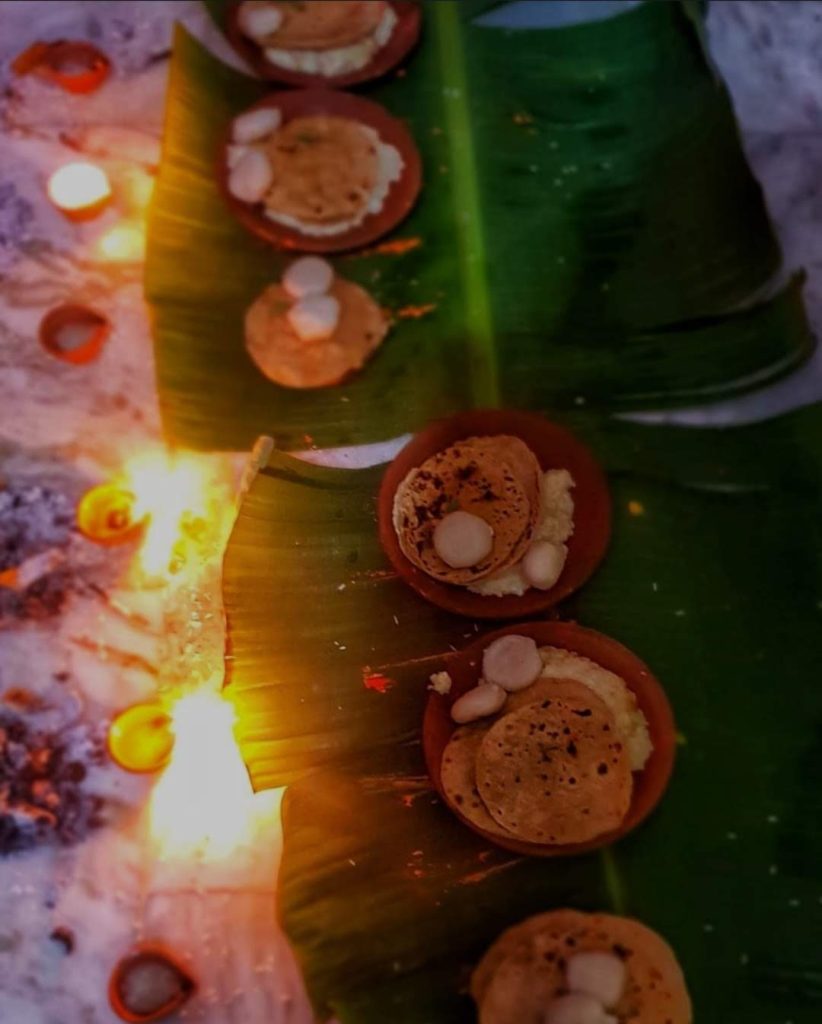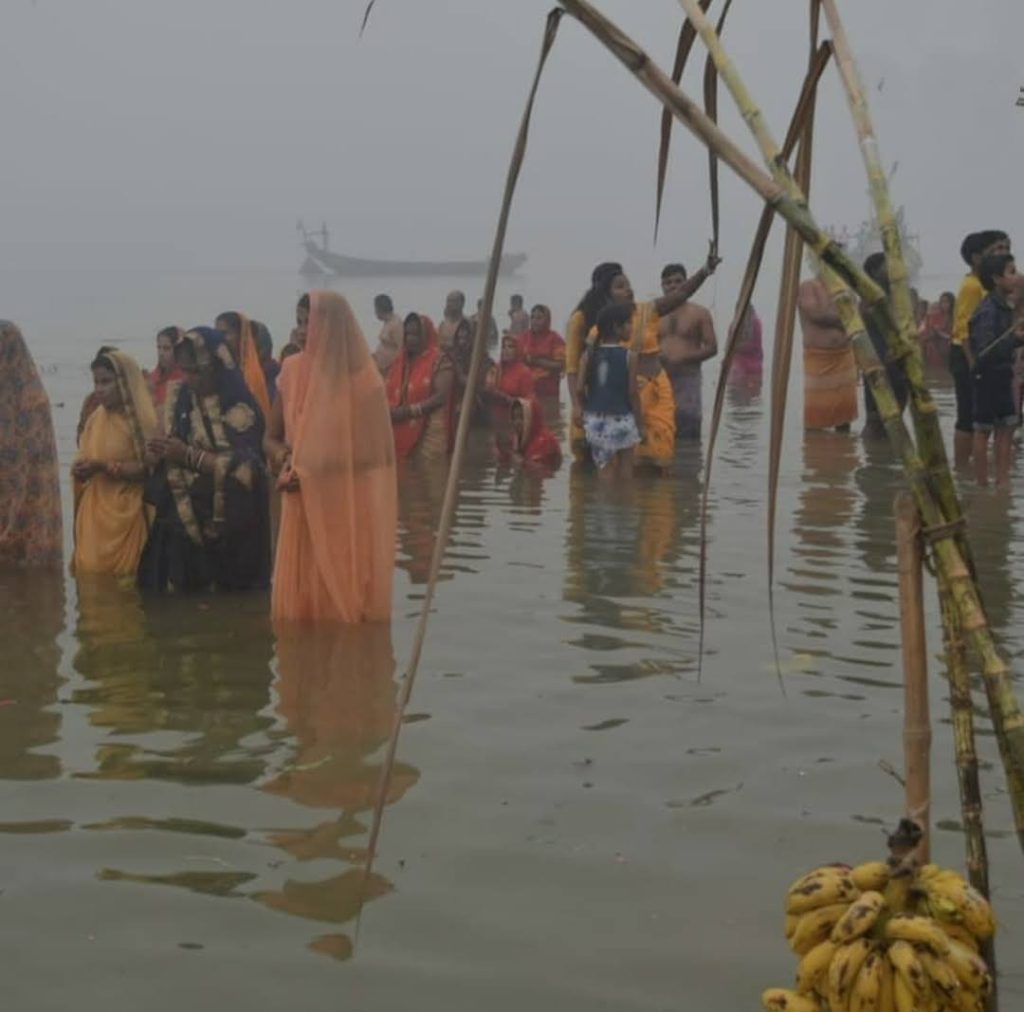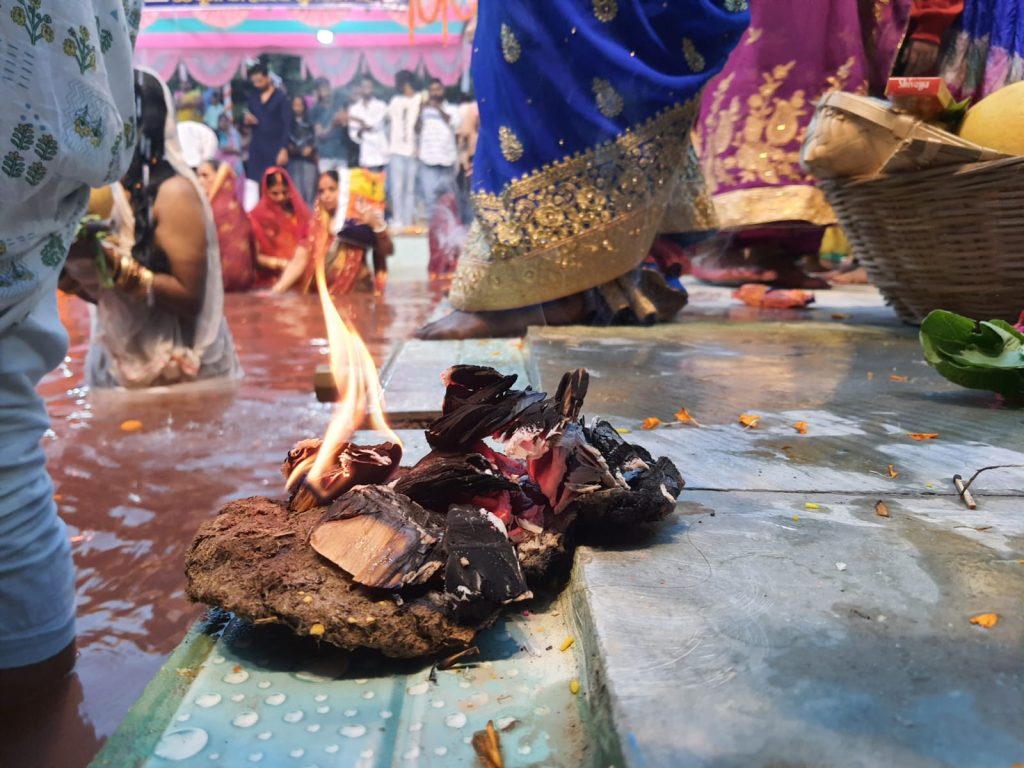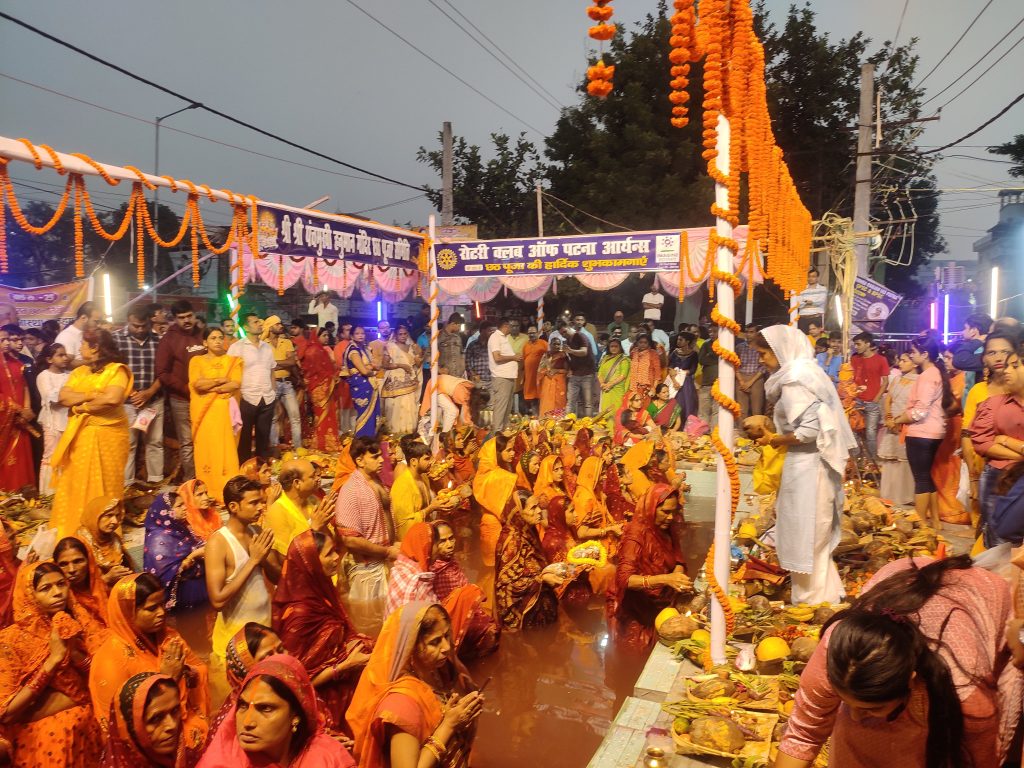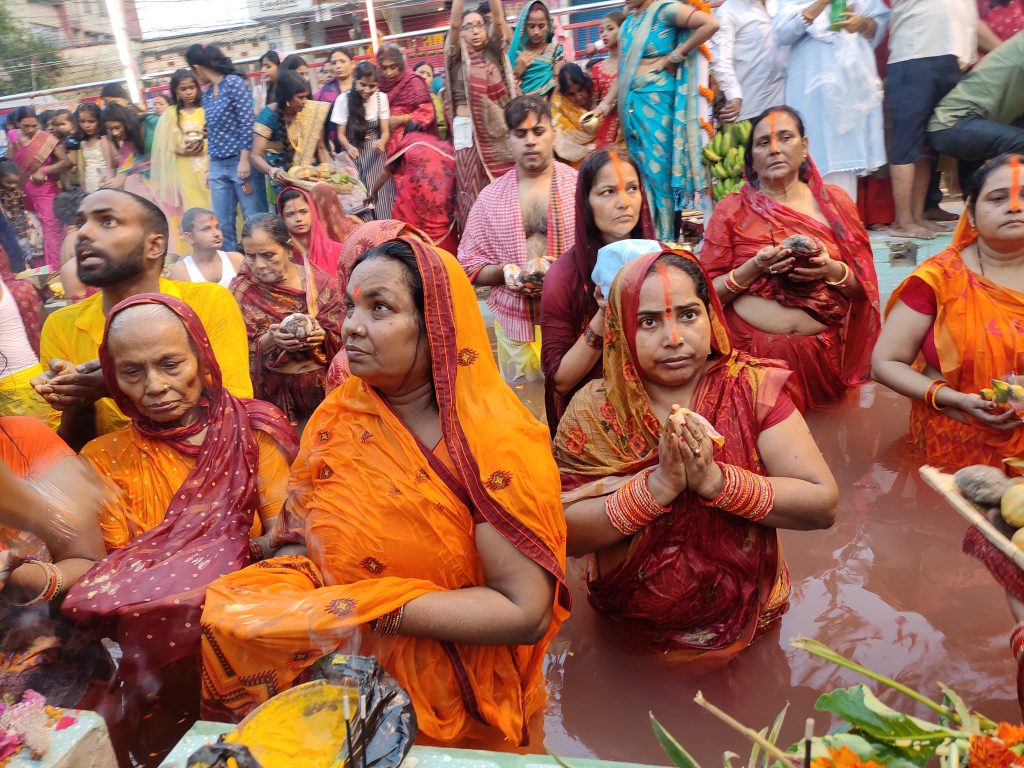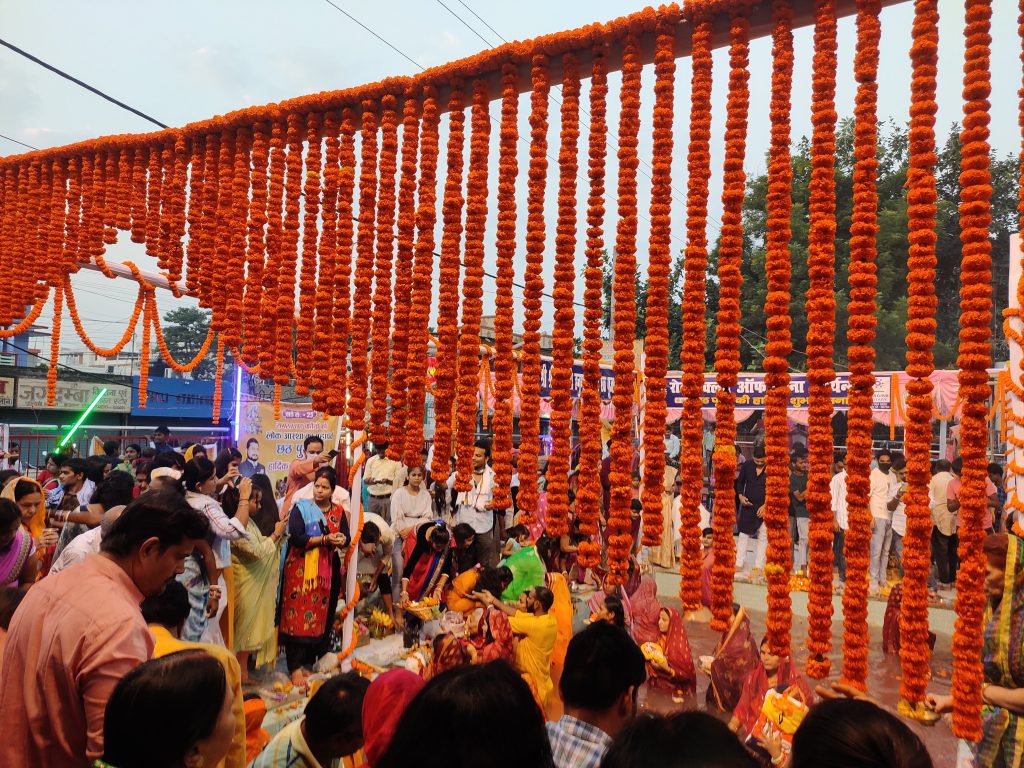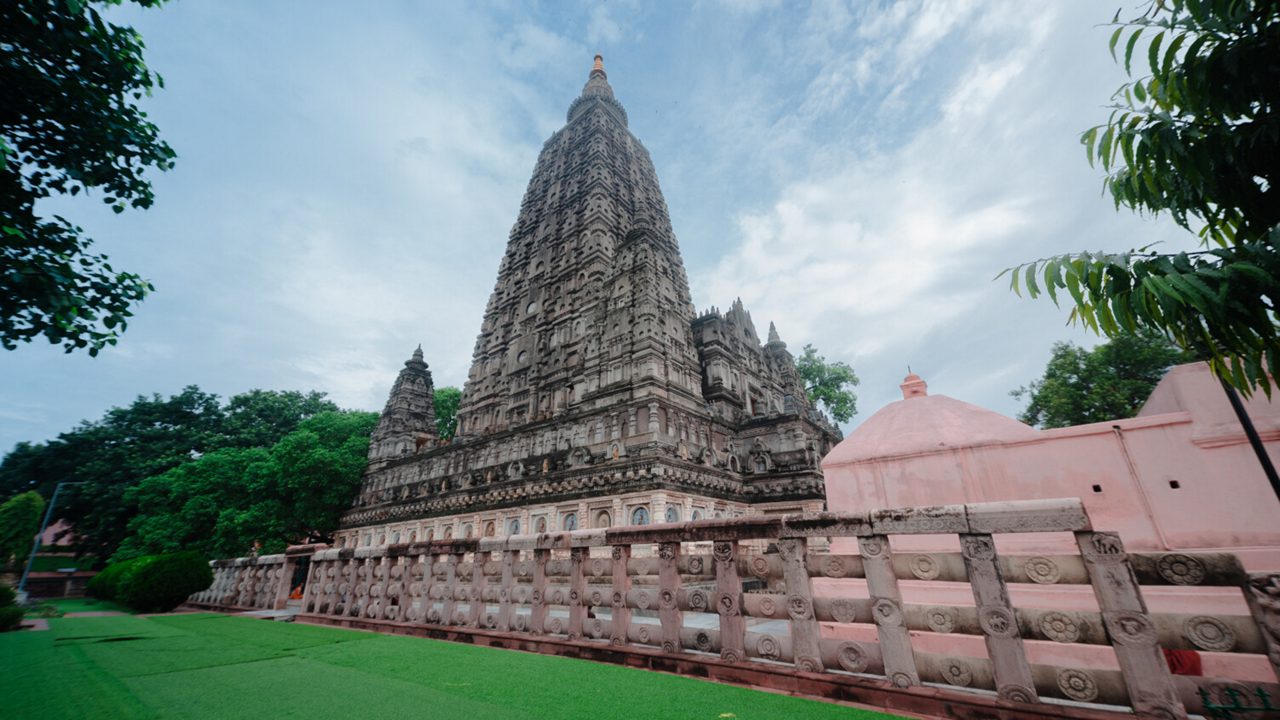Significance
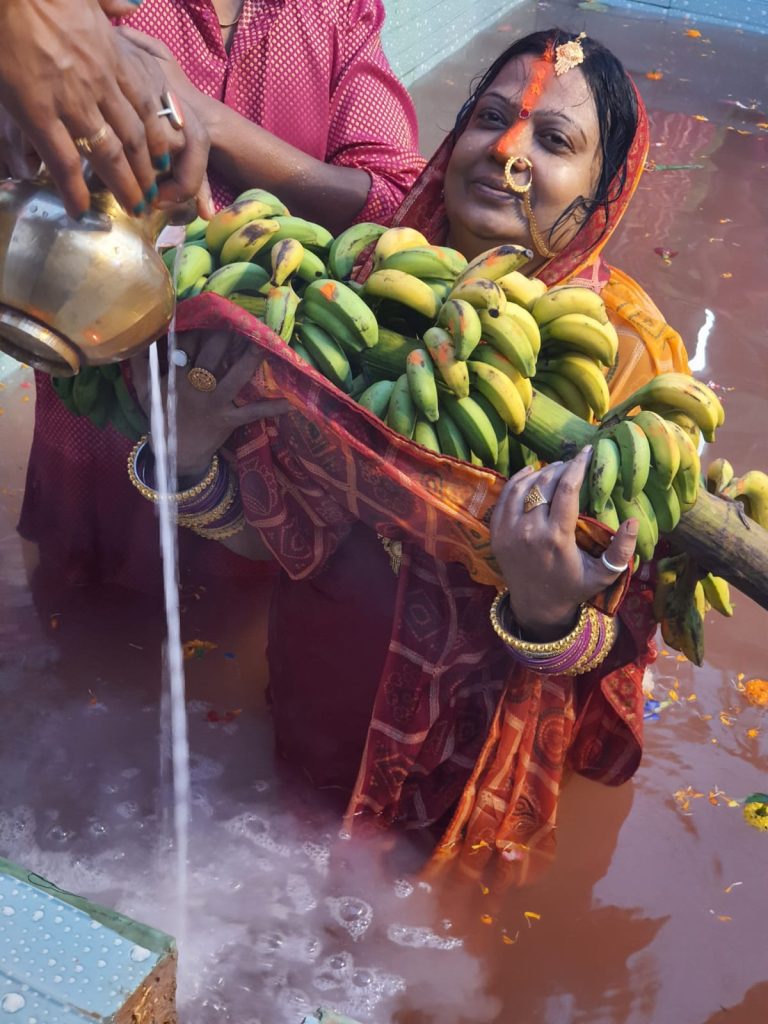
Chhath Puja is a Hindu festival that is celebrated primarily in the Indian states of Bihar, Jharkhand, and Uttar Pradesh, as well as in the Terai region of Nepal. It is also called Dala Puja. The festival is dedicated to the Sun God, Surya, and his wife Usha (also known as Chhathi Maiya). The word “Chhath” is derived from the word “sixth”. The four-day-long festival is celebrated on the sixth day of the Kartik month of the Hindu calendar, which usually falls in October or November.
Who is Chhathi Mai, though? As the name implies, six plays a significant role in the narrative. In the Brahmavaivarta Purana, God is said to have created both Purusha and Prakriti when He created the world. Prakriti was then further broken down into a number of elements, the sixth of which is Chhathi/Shasthi. According to award-winning Madhubani artist Pradyumna Kumar, who has done significant research on Chhath Puja, she is known as Devasena.
Chhath is also known as “Suryasasthi” because of the riverside rites when the Sun God, or Surya, is worshipped. It supports the perennially scientific notion that the Sun God grants every wish of Earthlings, and as a result, it is our duty to offer a special prayer of gratitude to the Sun for creating our world and giving life to all living things. At dawn and sunset, devotees arrive to perform the traditional worship of the sun, known as “arghya,” on the ghats or riverbanks. The morning ‘arghya’ is a prayer for a good harvest, peace, and prosperity in the coming year, and the evening ‘arghya’ is a statement of gratitude to the Sun God’s generosity for all that he has given over the previous year.
Rituals and Foods
The main rituals of the Chhath Puja include fasting, bathing in holy rivers or ponds, offering prasad (food offerings) and arghya (water offerings) to the setting and rising sun, and singing devotional songs. The festival is also known for its community-based nature, with people coming together to participate in the rituals and celebrations.
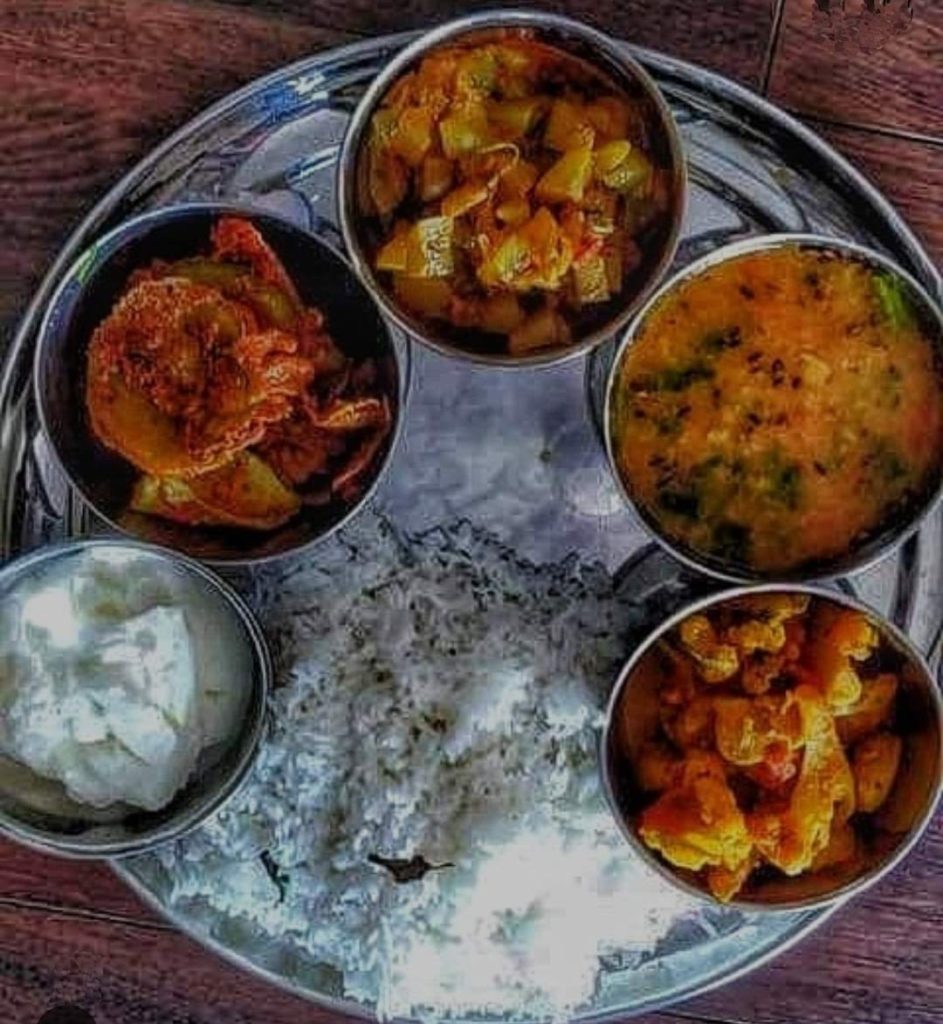
The rituals of Chhath Puja begin with the Nahay Khay or the “bath before the fast”. On the first day of the festival, devotees take a dip in a holy river or pond and then begin a strict fast that lasts for 36 hours. During this time, they are not allowed to eat or drink anything and are also prohibited from sleeping during the day.
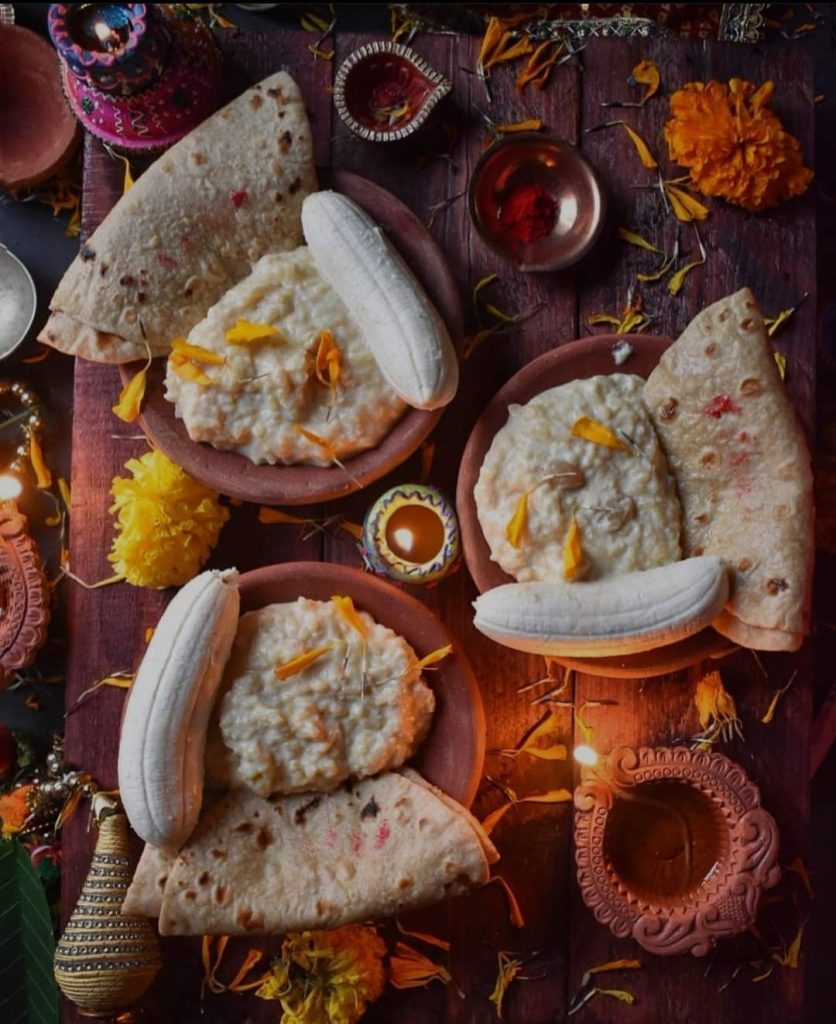
The second day of the festival is known as Lohanda and Kharna, and is dedicated to offering prasad and arghya to the setting sun. Devotees prepare offerings of sweets, fruits, and other delicacies, which are then offered to the sun god along with prayers for the well-being of their families. The arghya is offered to the rising sun on the third day, known as Sandhya Arghya.
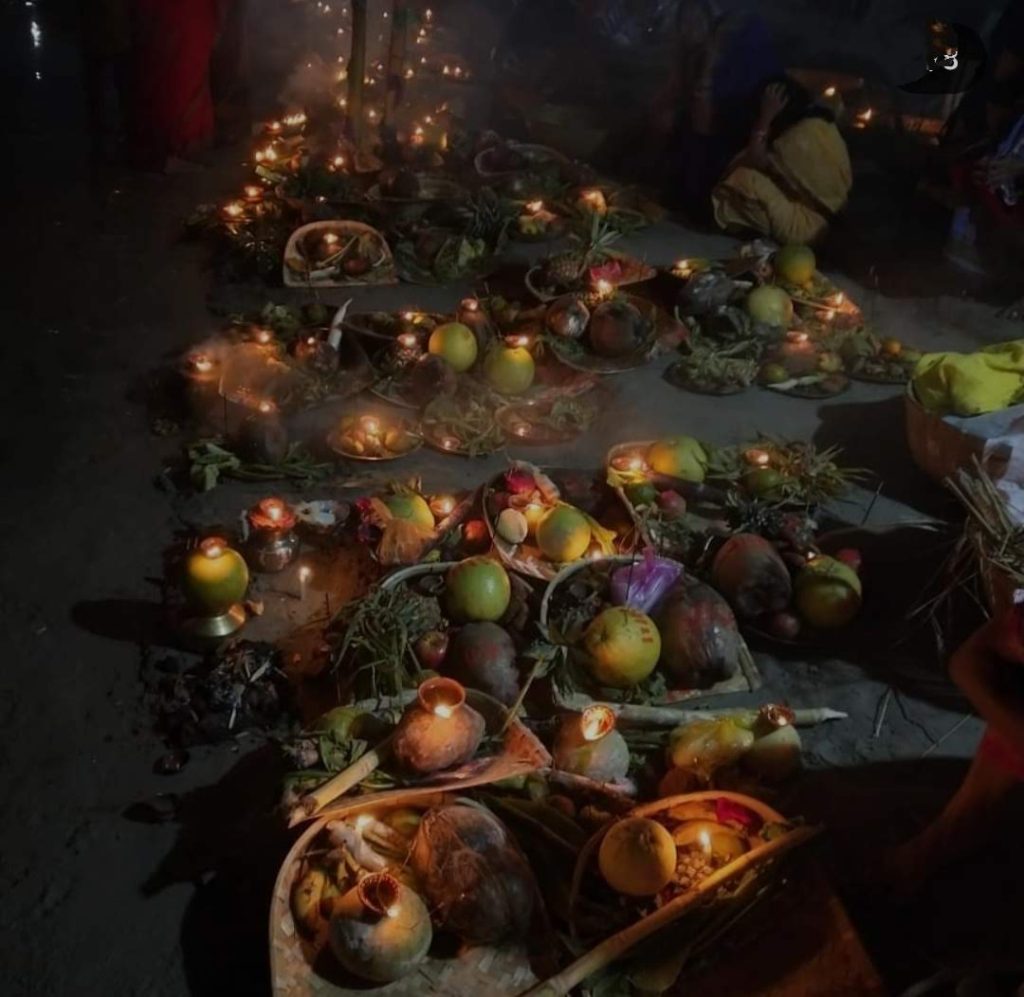
On the third day, which is a day of fasting without water, worship and ‘prasad’ preparation also take place. This day is distinguished by an elaborate evening ceremony known as the “evening offering,” or “Sandhya Arghya.” On bamboo trays filled with ‘Thekua,’ coconut, and banana in addition to other fruits, the offerings are presented to the setting sun. The ‘Kosi’ ceremony is then performed in homes.
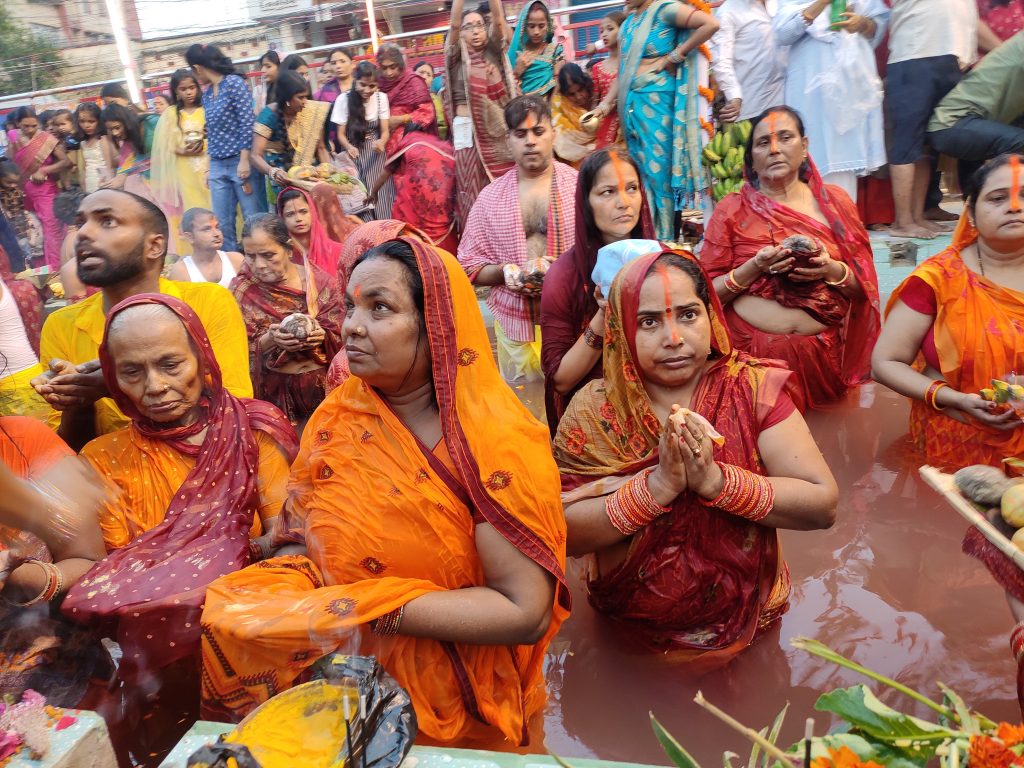
On the fourth and final day of the festival, known as Usha Arghya, devotees gather on the banks of rivers or ponds to offer Arghya to the rising sun. This is considered the most important and auspicious day of the festival, as it marks the end of the fast and the completion of the Chhath Puja rituals.
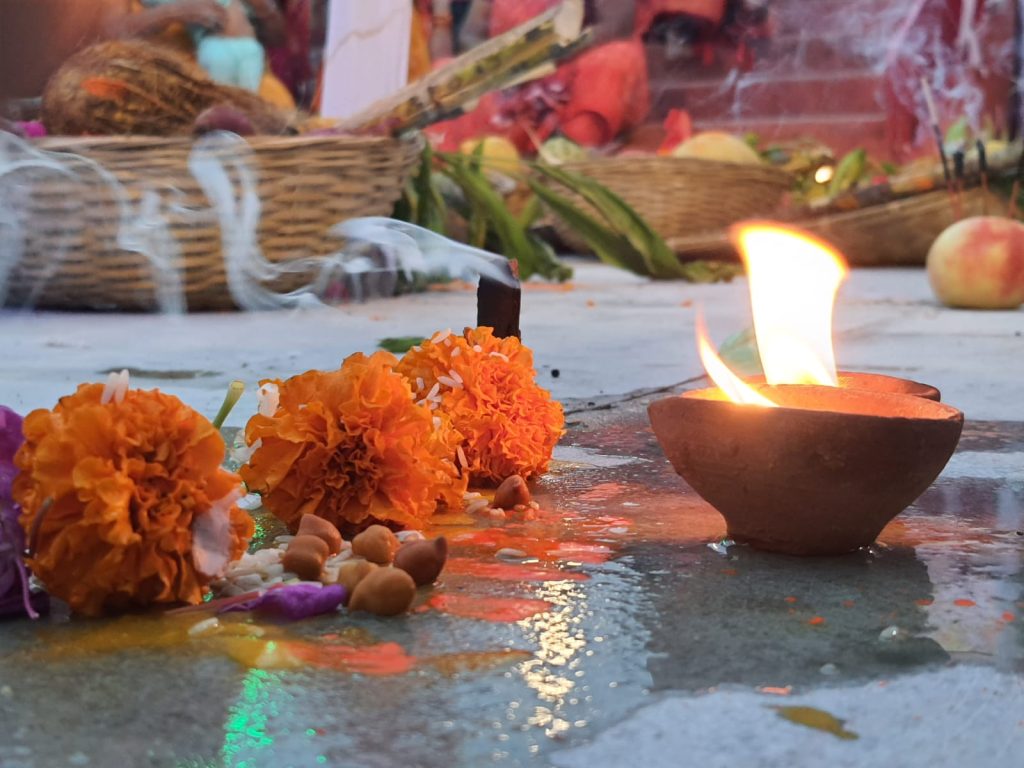
The Chhath Puja is also known for its devotional songs, known as Chhath geet or Chhath puja songs, which are sung in praise of the Sun God and Usha. These songs are traditionally sung by women and are an integral part of the festival’s celebrations.
Chhath Puja is an ancient festival that has been celebrated for centuries. However, it has gained increased popularity in recent years, with a growing number of people participating in the celebrations. The festival is not only an important religious event but also a time for people to come together and celebrate community and family.
Chhath Puja is a festival that is steeped in tradition, and its rituals are an important part of the cultural heritage of the regions where it is celebrated. The festival is a celebration of the power and generosity of the sun, and its importance for agriculture and human life. It is a symbol of devotion, gratitude, and respect for nature, and a reminder of the central role that the sun plays in our lives.
Legends associated with Chhath Puja:
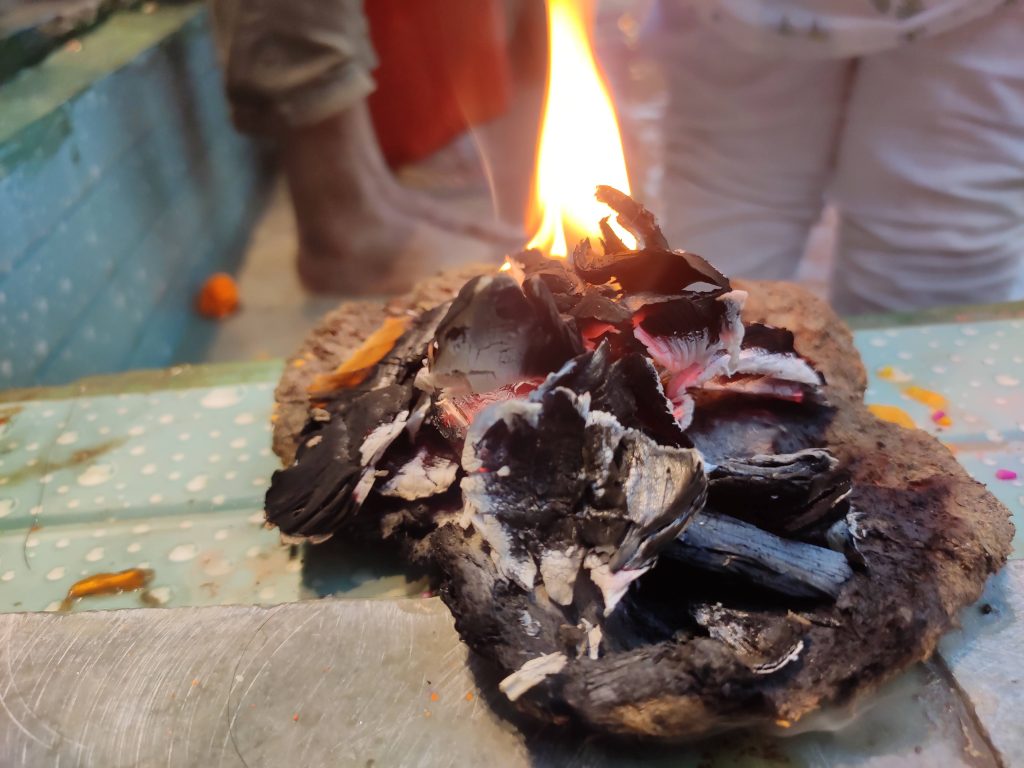
According to legend, Draupadi, the wife of the Pandava Kings, did Chhath Puja during the Mahabharata era. Thousands of traveling hermits once came to their hut during the protracted exile from their realm. The Pandavas had to provide the monks with food because they were devoted Hindus. However, because they were in exile, the Pandavas were unable to provide food for all of the starving hermits. Saint Dhaumya instructed Draupadi to worship Surya and follow the Chhath rituals for prosperity and abundance when she approached him for a quick fix.
The other legend is about King Karna. It is said that King Karna allegedly observed the Chhat Pooja Vrat as well. He was Surya’s (also known as Surya Putra) son. Through Surya worship, the warrior obtained power and became king. Hindus then started to worship Surya Dev in order to gain bravery, notoriety, health, wealth, and prosperity.
